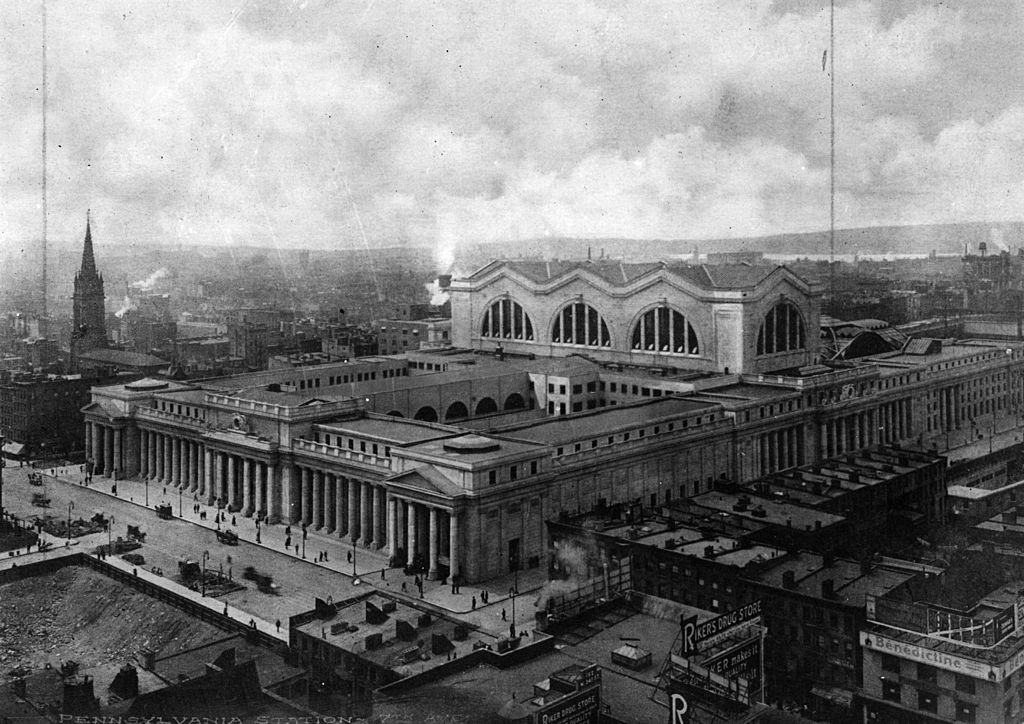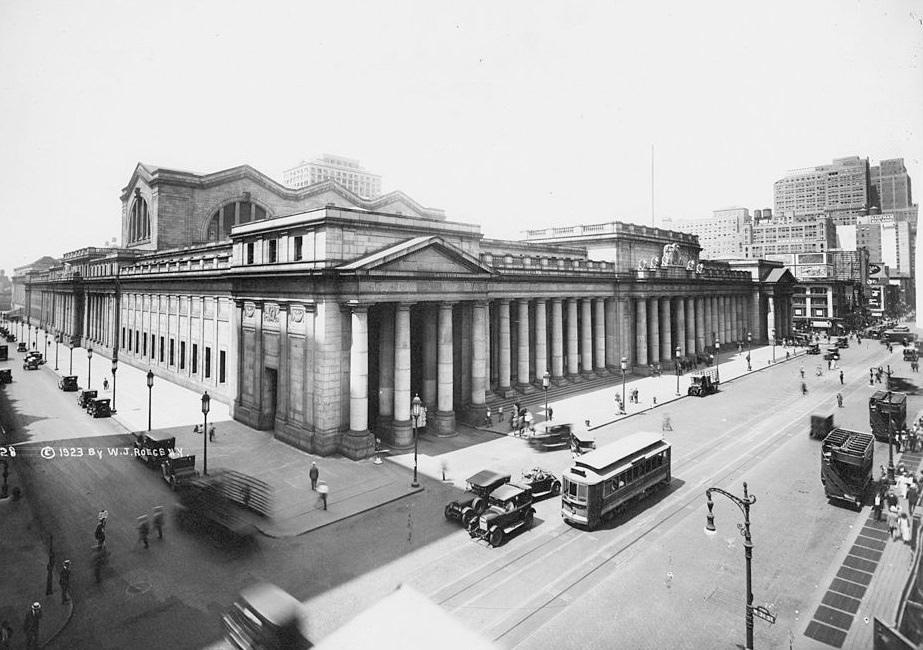Pennsylvania Station (1910–1963)
Description

The building was designed by McKim, Mead, and White and completed in 1910, enabling direct rail access to New York City from the south for the first time. Its head house and train shed were considered a masterpiece of the Beaux-Arts style and one of the great architectural works of New York City. The station contained 11 platforms serving 21 tracks, in approximately the same layout as the current Penn Station. The original building was one of the first stations to include separate waiting rooms for arriving and departing passengers, and when built, these were among the city's largest public spaces.
Exterior

The exterior of Penn Station was marked by colonnades of Roman unfluted columns based on the Classical Greek-style Doric order. These columns, in turn, were modeled after landmarks such as the Acropolis of Athens. The rest of the facade was modeled on St. Peter's Square in Vatican City, as well as the Bank of England headquarters. The colonnades embodied the sophisticated integration of multiple functions and the circulation of people and goods. The colonnades had a strongly horizontal orientation, interrupted only by the lunette windows and the roof of the waiting room. The ornamentation was intentionally simple, with emphasis being placed on the "unity and simplicity" of different parts of the design. The roof was made of Monel alloy, an Inco product.
https://en.wikipedia.org/wiki/Pennsylvania_Station_(1910%E2%80%931963)